3 pro tips from Mike Farrington
Mike Farrington offers up three things that he does to save time and money in the shop.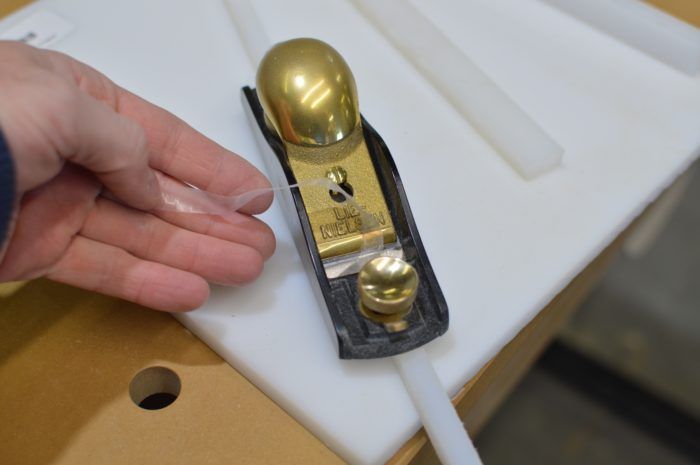
The sun is staying up noticeably longer. I went on my first motorcycle ride of the year, there are pallets of mulch in the parking lot of Lowes, and they have hundreds of barbecue grills on display. That’s right, spring is just around the corner. I don’t know about you, but I am looking forward to picnics at the lake, riding bikes with the kiddos, and mowing the yard. With that said, here in Colorado we always get a few late-season, heavy snowfalls, which are always beautiful. They give us the opportunity to go sledding and build one or two final snowmen for the season.
This month I wanted to share a few tips that I have picked up over the years that help me out around the shop. Let’s get started.
Tip 1:
UHMW is great for jigs:
I like to use ultra high molecular weight polyethylene (UHMW) for runners of jigs that ride in miter slots. The photos show two sleds, my tablesaw sled and a coping sled for my shaper. UHMW can be bought in a variety of colors, thicknesses, and sizes. It’s not the cheapest material ever, but the benefits make it worth it. First, it is very low friction, which makes it great for sled runners. They can be fitted very tightly to a miter slot and still slide effortlessly. UHMW is also dimensionally stable, so it will remain at the milled dimension year round. It can be cut to size with normal woodworking tools. Final fitting can be done with a handplane.

UHMW can be bought in sheets and cut to size. I prefer to use the bandsaw.

These sleds ride slick as snot.

I hold the runners in place with screws. Make sure to use an appropriately sized countersink. I use a block plane or shoulder plane to tune the fit.
Tip 2:
Keep tools mobile:
Locking casters are great for every shop. The ones that lock the wheels’ rotation as well as direction are best. Aside from my main tools (bandsaw, planer, jointer, tablesaw), I have everything on casters. I like this because many tools in my shop get used only a once a month or less. To have a dedicated station for each tool would clutter up my floor space. Since all of my work is custom and oftentimes very large, it’s important for me to keep my shop layout flexible. I really like being able to wheel my router table or mortiser over to my bench where all my parts are ready and waiting, perform a task, then wheel the tool back to its home. I find these dual locking casters to be stable enough for tools like router tables, mortisers, or pocket-hole machines. I do not think they are stable enough for a workbench where handplaning or chiseling will be done. So use these only for carts and other mobile tools.
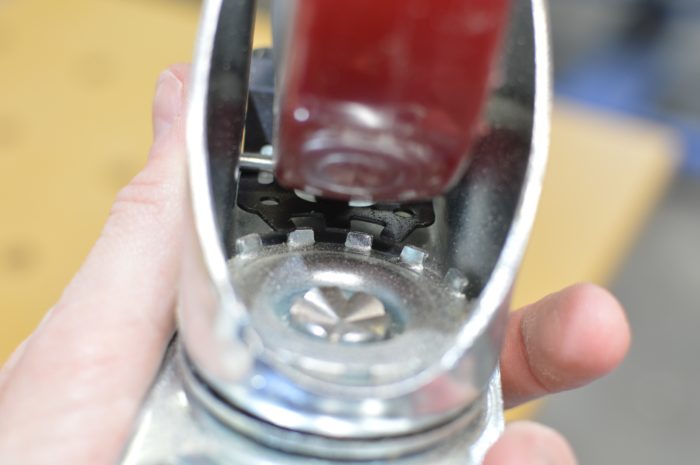
These teeth lock the rotation.
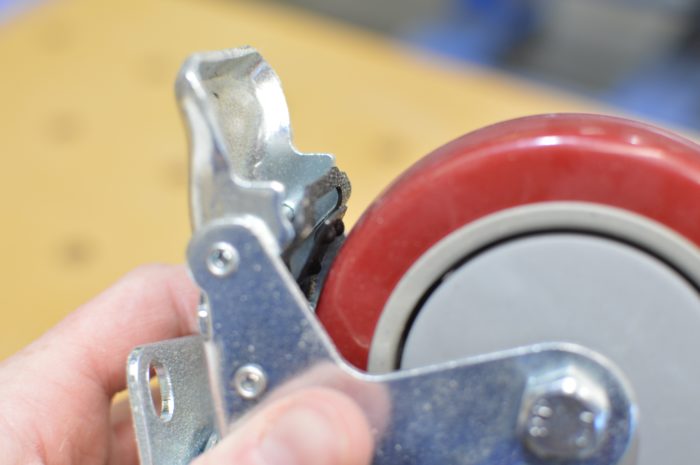
This metal flap keeps the wheel from spinning.
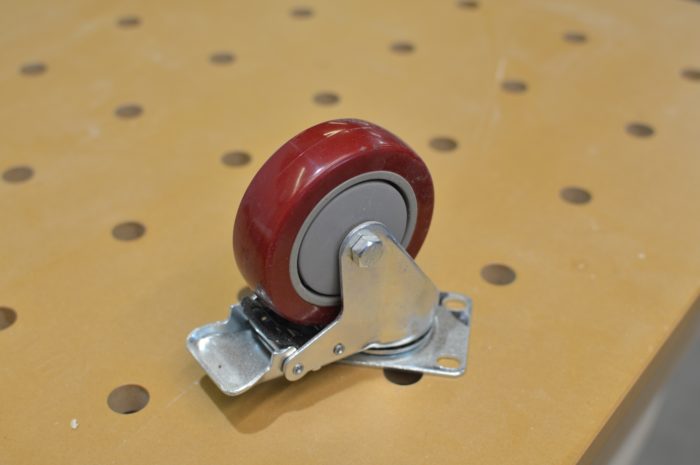
This is the 4-in. size. I also get the 3-in. for smaller, lighter carts and tools.
Tip 3:
Use brown maple for painted projects:
In the industry, many consider poplar the standard paint-grade wood. It does paint well and it certainly is cheap, but it is very soft. Depending on what the project is, I think it’s too soft. Let me expand a little. For projects like window moldings or wall paneling, poplar is fine. It won’t take too much of a beating, plus projects like that typically take lots of lumber so cost becomes an issue. When I’m going to build a painted project where I want a tougher lumber, I like brown maple. Typical projects for brown maple include desks, passage doors, dressers, freestanding furniture, etc. These are projects that will get kicked, bumped, and touched frequently. I’m not going to offer a scientific name because from my understanding “brown maple” isn’t just one type of maple. The lumber store I buy from lumps any soft maple with a brownish or stained appearance into the brown maple category. So why buy this lumber? Well you get the hardness of soft maple (which is a very hard wood), with a significantly lower price. At my pricing tier, it’s about halfway between the cost of poplar and soft maple. So I get a wood that is about double the Janka hardness of poplar that paints well for a good price. Keep in mind your local supplier may call this grade of lumber something different, so ask questions.
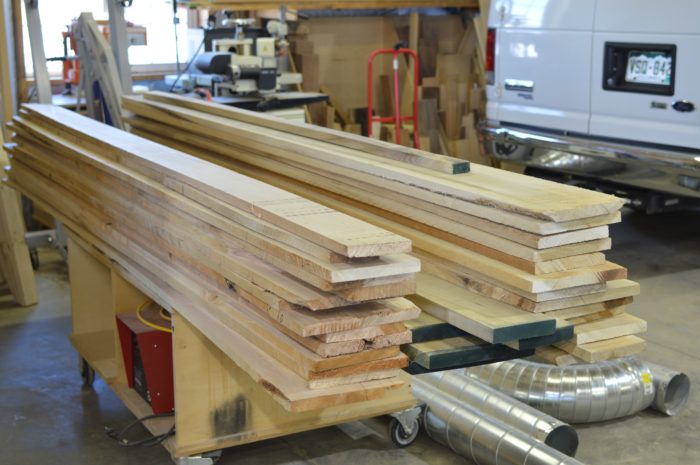
A pile of brown maple next to a pile of poplar.

This picture is my attempt to show the additional color.
I hope you find these tips useful. Now get out to the shop and build something!

















Comments
Great advice Mike, I use mesquite as runners for sleds because of hardness and stability but umhw may be better. And yes brown maple is great wood for paint projects. Thanks for your article.
I also like UHMW for sleds and other uses. I have never heard of brown maple and we have lots of maple in southeast Ohio. Maybe the lumber suppliers I go to just put it in with the other soft maple. Good post Mike.
My supplier calls the brown-streaked maple "soft maple", and sometimes "country maple".
UHMW is great, but expensive. When I just need the slipperiness without the bulk, I've begun using self-adhesive UHMW tape. Time will tell if it holds up, but so far it's great for existing jigs, drawer runners, etc. And it's very cheap, compared to the sheet material.
My 98 Dodge Maxi-Van is full of tools since I was a house builder and remodelor. What is in you van?
James
Log in or create an account to post a comment.
Sign up Log in